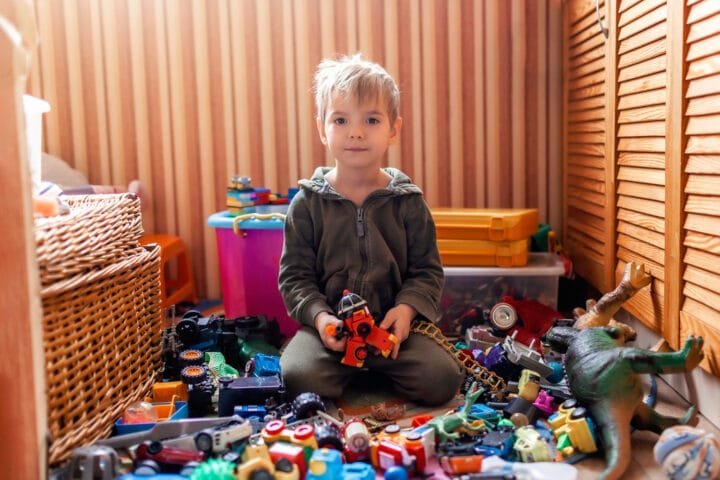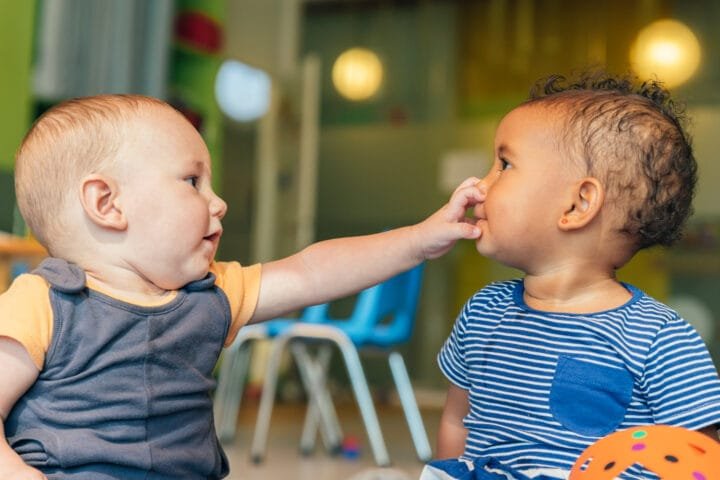Have You Experienced Birdwatching as an Empowering Activity and Connection to Nature
Have you felt the thrill of watching a hawk soar across the sky or a hummingbird flit between flowers? Now, imagine your child experiencing that same wonder. Birdwatching is not just about observing birds; it’s about empowering kids and connecting them to nature. It’s about instilling confidence in their ability to understand and appreciate the world around them.
Though seemingly simple, birdwatching unlocks a world of discovery and joy for young minds. It’s not just about spotting birds; it’s about the excitement of the hunt, the wonder of nature, and the joy of learning. It provides access to nature while sparking curiosity and instilling an appreciation for the wild. Let’s explore how this pastime empowers kids while connecting them with nature!
Why Birds Are Fascinating?
Birds have long captivated us, embodying freedom, grace, and life’s interconnectedness. From eagles, symbolic of strength, to wise owls, birds hold profound meaning across cultures. Birdwatching transforms any ordinary space – your yard or local park – into an engaging learning environment with possibilities.
Birdwatching: An Opening to Nature
Birdwatching is an accessible activity. Children of all ages can join, with no specialized skills or expensive gear necessary – just an attentive mind and keen eyes are needed to begin! But it’s not just a fun pastime; it’s a valuable educational tool. Birdwatching offers endless learning and enjoyment. We will explore its cognitive, emotional, physical, and environmental benefits for children and equip you to introduce this enriching hobby to them.
Sharpening Young Eyes: Harnessing Young Detectives
Children are acutely alert to the tiniest details while playing, which adults can not notice. Birdwatching enhances this skill by making sharp observers. Imagine your child observing subtle differences in color patterns, their beaks’ distinctive shape, and birdsong sounds! Imagine them distinctly separating male and female cardinals or hearing a chickadee’s chirp!
A 2017 study published by Frontiers in Psychology confirms that activities involving nature, such as bird watching, may improve children’s ability to observe and focus, resulting in higher general cognitive performance and academic achievement. Every bird is an intricate puzzle that children must solve. They can spot small details, like eye markings on warblers or wings on sparrows. They listen to the birdsong orchestra by distinguishing between robin calls and the mournful calls of doves, enriching their birdwatching experience and broadening their perspective of the world surrounding.
Beyond Identification: Unlocking Nature’s Secrets
Birdwatching extends beyond simply identifying birds; it involves exploring bird behavior and interactions with their environment. Children learn the motivations behind woodpecker drumming, the architectural marvels of bird nests, and migration mysteries – these investigations require them to think critically, analyze information, and form hypotheses; even just noticing a bird nibble on a particular berry could provide insights into how plants and animals co-exist within an ecosystem; this kind of critical thinking, problem-solving, and connection is crucial for academic success as well as life itself!
Birds undergo extraordinary migration journeys across continents driven by instinct, seasonal shifts, and their pursuit of food and breeding grounds. Birdwatching opens up an exploration into geography, weather patterns, and the intricate web of life. It provides a vehicle for developing an appreciation for the natural world around us.

Memory Games with Feathers: Enhancing Recall
Remember childhood memory games where matching pairs was vital? Birdwatching offers the same thrills of discovery! Each bird becomes a valuable piece of information to be stored and retrieved. Children learn species names, their unique songs, and preferred habitats for birds while strengthening their memory.
Research from UC Berkeley has found that children engaged in outdoor activities, including birdwatching, have superior spatial memory recall. Picture this: a child’s face lights up as they remember a bird’s name and features months later, perhaps even imitating its song! These cognitive skills are invaluable for academic success and enriching life. Birdwatching helps children develop these cognitive abilities while deepening their connection to nature.
Cultivating Stillness: The Art of Patience and Quietude
Birdwatching can provide a peaceful respite for children amid constant stimulation from screens, encouraging them to slow down, focus, and be present in the moment. Picture a child sitting by the window with binoculars, patiently waiting to glimpse a scarlet tanager, or perhaps nestled among trees, listening to singers singing or watching nests being constructed.
Birdwatching introduces children to the beauty of observation, mindfulness, and present-moment awareness. Connecting to nature through this hobby fosters inner peace and tranquility. Immersion in nature’s music – rustling leaves, chirping crickets, and a woodpecker’s drumming – can provide respite from modern life while cultivating calmness and connection.
Birdwatching Igniting Wonder: An Excitement that Leads to Lifelong Passion
Have you ever seen a child’s eyes light up at the sight of a shooting star or a breathtaking sunset? Birdwatching has the power to evoke this same sense of awe and curiosity in children, exposing them to the wonder and complexity of nature. The thrill of witnessing a hummingbird hovering midair with its shimmering feathers or listening to the dawn chorus can ignite a lifelong passion for nature and inspire a desire to protect it.
Contemplate the wonder in a child’s eyes as they witness a hummingbird darting around, drinking nectar, creating an enduring fascination and thirst for knowledge about these tiny birds. Birdwatching becomes an avenue to explore nature’s secrets while appreciating life’s delicate balance.
Flocking Together: Birdwatching and Social Connection
While birdwatching may seem like a solitary hobby, its social aspect creates excellent opportunities. Sharing one’s passion increases enjoyment and deepens the learning experience. Envision children on a nature walk, excitedly pointing out rare birds or participating in bird identification projects together.
Consider looking for local birdwatching clubs or groups that organize outings and activities for children. These groups can provide a supportive and engaging environment for children to learn about birds and nature while developing social skills and fostering community.
Nature’s Playground: Encouraging Outdoor Activity
Birdwatching encourages children to spend time outdoors and appreciate nature. Hiking, breathing fresh air, and basking in sunshine are all essential for their well-being. Research shows that spending time in nature can significantly improve children’s health and psychological well-being, reducing stress levels, enhancing moods, and fostering creativity. By introducing your child to birdwatching, you’re not just giving them a fun activity, but also promoting their overall health and happiness.
Always dress according to the weather, wear sunscreen, and pack water and snacks, as these precautions will ensure your children a safe and enjoyable birdwatching experience. Birds provide endless entertainment, turning outdoor time into an enriching experience. A family can embark on an enjoyable birdwatching excursion at their local park; children scramble across meadows, climb rocks, and navigate trails as nature awakens their senses, strengthening bodies while reinvigorating minds – creating lasting memories!
So why not start birdwatching with your children today? It’s a simple, accessible, and rewarding activity that can empower your kids, connect them to nature, and foster a lifelong love for the outdoors.
Birdwatching goes beyond mere observation – it provides children with an invaluable opportunity to understand birds’ roles in ecosystems and their challenges, such as habitat loss, pollution, and climate change. As they experience the interdependence of all living things, they become inspired to participate in conservation efforts and reduce their ecological footprint while becoming advocates for nature.
Birdwatching encourages children to develop an appreciation for protecting natural environments, reducing pollution, and making sustainable choices. They create an understanding of environmental issues and their responsibility towards them.
Connecting with Place: Exploring Backyard Biodiversity
Birdwatching offers children an engaging way to discover their local environment while discovering its diverse bird species. As children discover hummingbirds’ relationships with native wildflowers and discover why ecosystems must be preserved, this reveals an appreciation of life’s interdependence as they gain an appreciation of ecosystem protection.
Equipping Young Explorers: Essential Tools and Resources
Birdwatching requires minimal equipment: binoculars, a field guide, and a notebook are sufficient. While binoculars enhance viewing experiences and field guides assist species identification, notebooks allow budding naturalists to record their observations. Many online resources provide helpful tools, bird identification apps, and educational materials for young birders. When shopping for binoculars for children, opt for those with lower magnification and broader fields of view, lightweight yet durable designs. Practice before going out on expeditions is also recommended.
Welcome to the Bird Cafe!
Turn your backyard into an inviting bird space by setting up feeders, birdbaths, native trees, and shrubs to create a welcoming habitat for various bird species. Picture children’s delight as they watch different birds visit their backyard, deepening their connection to nature while instilling a sense of responsibility for bird welfare. Consider that other birds have different dietary needs. Please provide them with various seeds, such as sunflower, nyjer, and suet. Clean your feeders regularly to prevent disease.
Beyond Identification: Engaging Activities for Young Birders
Birdwatching provides many engaging activities beyond simply identifying species. Plan a scavenger hunt to encourage children to locate birds with certain features or create a bingo-style birdwatching game! Encourage children to keep a nature journal, recording observations and sketches. Photographing birds will foster creativity while deepening their appreciation for nature. Consider organizing a bird sit activity where children record all the birds they spot or hear during a specific time. This helps build observation skills.
Birdwatching and Technology: An Effective Partnership
Technology can enhance the birdwatching experience. Bird identification apps give children a fun and interactive way to identify birds, while online resources provide educational games, videos, and activities. GPS-tracking devices used for studying migration patterns can be integrated into educational activities; learning about their amazing navigational feats fosters a more significant appreciation of technology and nature. Imagine having your child use an identification app to instantly recognize an unfamiliar bird while receiving invaluable details on its range, habitat, and behavior – enriching their learning experience while adding another dimension!
Birdwatching as a Family Affair: Making Lasting Memories
Birdwatching can reward the whole family, forging bonds and creating lasting memories. Envision a family hiking adventure as they identify different bird species or silently observe nesting activity! Grandparents can play an invaluable role in introducing children to birdwatching, strengthening family bonds while instilling an appreciation of nature. Plan a family bird-watching outing to a nearby park, pack a picnic lunch, bring binoculars and field guides, and encourage everyone in your party to identify any birds they see.
Birdwatching in the Classroom: Integrating Nature into School
Implementing birdwatching into school curricula can transform how children learn. Visualize a classroom where students eagerly observe birds outside their windows, identify them using field guides, and document their observations – this would undoubtedly have an enormous positive effect. Establishing a schoolyard habitat equipped with bird feeders, bird baths, and native plants provides students with an ideal living laboratory to observe birds. Field trips to local parks provide students with additional learning opportunities. Teachers can utilize birdwatching as an engaging and educational way of exploring biodiversity, adaptation, and migration concepts. Students can research local bird species or participate in citizen science initiatives.
Birdwatching and Citizen Science: Contributing to Real Research
Birdwatching can serve as an entryway into citizen science for children, empowering them to contribute directly to fundamental scientific research. Projects like the Great Backyard Bird Count and eBird encourage children to collect data on bird populations. Consider a child participating in the Great Backyard Bird Count and diligently recording all the birds that visit their backyard, providing crucial data that allows scientists to monitor bird populations, migration patterns, and environmental shifts. Their data contributes to scientific studies of global climate change.
Birdwatching and Art: Sparked Creativity
Artists have long found inspiration in birds. Encourage children to express their creativity through bird-themed art projects. Drawing or painting their favorite bird will spark their creativity! Writing poems about their experiences birdwatching or making sculptures out of natural materials will further unleash children’s creativity. Consider hosting an art exhibit dedicated to birdwatching-inspired works created by children.
Birdwatching and Mindfulness: Finding Peace in Nature
Birdwatching offers children an ideal way to practice mindfulness. Gently watching birds, listening to their songs, and noting small details about their behavior help them focus their attention and cultivate feelings of calmness. Encourage children to participate in mindful birdwatching by paying close attention to all five senses in their environment – sight, sound, smell, and touch – during birdwatching sessions. Doing this deepens their connection to nature.
Birdwatching and Storytelling: Woven Tales of Feathered Friends
For generations, birds have played an essential part in stories and mythology. Encourage children to draw upon their birdwatching experiences when writing stories featuring migrating birds or secretive bird songs as sources for creativity and imagination. Organize a storytelling session where children can share bird-related tales, supporting one another’s creativity and encouraging one another’s writing skills.
Birdwatching and Photography: Capturing Moments of Beauty
Bird photography can be an engaging activity for children. Please provide them with cameras and basic photography techniques; this activity will teach them composition, lighting, and the patience required to take great images that create lasting memories and beautiful pictures. Create a bird photography competition, inviting children to submit their best shots of birds. This will encourage their photography abilities while raising awareness about the beauty and diversity of birds.
Birdwatching and Community: Fostering a Shared Passion
Birdwatching can instill an appreciation of nature in children. Encourage them to join local birdwatching clubs, attend bird festivals, and volunteer at nature centers – these experiences allow children to connect with fellow bird enthusiasts while learning from experts about conservation efforts str, lengthening social skills, and deepening their connection to nature – these experiences help children develop long-term connections between themselves and nature and ourselves. Imagine attending a bird festival where children from different age groups shared an enthusiasm for birds while inspiring each other to preserve them and their habitats!
Conclusion
Birdwatching is more than a hobby; it’s an adventure in discovery, connection, and empowerment. It provides children with access to nature while instilling an appreciation of environmental sustainability and leading them toward lifelong ecological stewardship. By involving children in birdwatching, we open their eyes to the beauty of nature while stimulating their curiosity – encouraging them to become protectors of our feathered friends.
FAQs
Start by sparking their curiosity! Point out birds in your everyday surroundings – a robin on the lawn, a flock of geese flying overhead. Use a bird identification app or book to learn their names together. Set up a bird feeder in your backyard and watch the feathered visitors arrive. Most importantly, share your enthusiasm for the natural world.
Birdwatching is wonderfully accessible! You don’t need fancy equipment to start. A pair of binoculars can enhance the experience, but a keen pair of eyes is essential. A field guide to birds in your region can help with identification. A notebook and pencil encourage your child to record their observations and create their birdwatching journal.
Look for local parks, nature reserves, or wildlife sanctuaries with trails and diverse habitats. Your backyard can be a great place to start! Plant native trees and shrubs to attract birds, and create a mini bird sanctuary with a birdbath and feeder.
Turn birdwatching into an adventure! Organize a scavenger hunt with a list of birds to spot. Create a birdwatching bingo game. Please encourage your child to draw or photograph the birds they see. Join a local birdwatching club or participate in a citizen science project like the Great Backyard Bird Count.
Birdwatching can provide a variety of benefits for kids. It helps develop the ability to observe, which is critical and analytical, and enthusiasm for science. It promotes physical exercise, reduces stress, and helps to improve mindfulness. Most importantly, it connects children to the natural world, inspiring them to become caretakers of our planet.
Related Posts



















































































